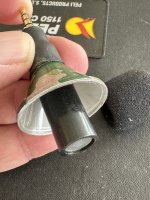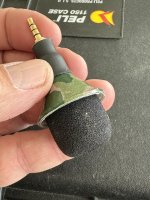Hi Folks,
Keen to explore potential for simple noc-mig set-up, using a mono Smart Clippy EM272 (with appropriate foam and wind-jammer) connected to laptop and recording directly to Audacity for subsequent analysis - would that work or would I need a pre-amp to boost signal in any way? I'm aware that I could use a USB mic such as the Marantz MPM1000 but from my limited understanding the EM272 is a more sensitive option?
TIA for any advice or alternatives,
Col
Keen to explore potential for simple noc-mig set-up, using a mono Smart Clippy EM272 (with appropriate foam and wind-jammer) connected to laptop and recording directly to Audacity for subsequent analysis - would that work or would I need a pre-amp to boost signal in any way? I'm aware that I could use a USB mic such as the Marantz MPM1000 but from my limited understanding the EM272 is a more sensitive option?
TIA for any advice or alternatives,
Col






